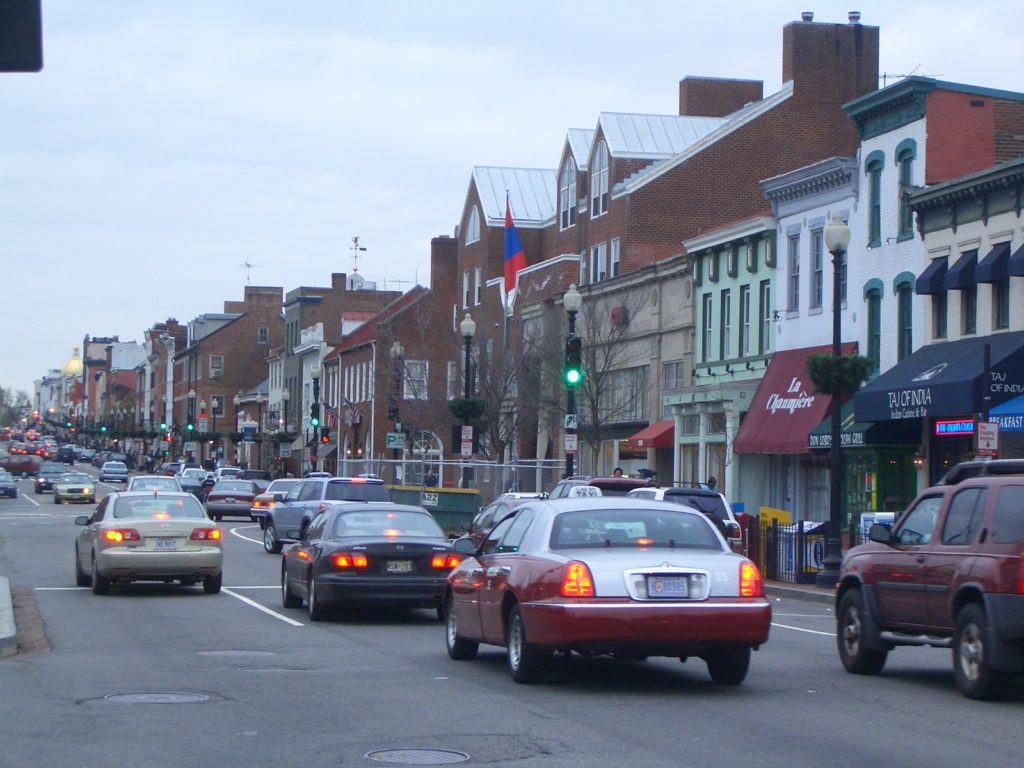Rents Too High? Get Creative.
By • July 26, 2017 0 405

Georgetown is more than 260 years old and internationally recognized. No matter where you travel, when you say you live in Georgetown, everyone recognizes the name — and wants to come visit.
Despite competition from other neighborhoods, Georgetown is “still crowded on Saturdays,” said Jamie Scott, economic development manager for the Georgetown Business Improvement District. “It has a huge diversity” of shoppers walking around.
But the plight of Wisconsin Avenue, lately suffering from a shortage of top-notch retail and restaurants, has left us wondering what to do. In the two previous editorials, we considered the situation from the perspective of tenants, then landlords. In this third (of three parts), our aim is to move toward a solution by asking key questions.
■ What do Georgetowners (and others) want? Where do they like to dine and shop?
■ How should we distinguish between M Street and Wisconsin Avenue? What are the opportunities and challenges of each?
■ How we develop a fresh vision for Georgetown’s revitalization?
According to Scott, the solution is to get property owners working together with tenants. That’s not easy, though, with tenants being forced out by high rents and a lack of retail vision, restaurants included.
How did this come about? Well, some new owners may have paid too much for a building and need high rents. The Georgetown market is traditionally strong, and some landlords think they can still wait for the next big tenant. Meanwhile, vacant storefronts detract, and landlords must recognize the fact that online sales take away opportunities from traditional brick and mortar retail.
There is another way, said Scott, who encourages property owners to get creative. How about a lower rent with the owner getting a percentage of retail sales? The store succeeds. The landlord succeeds.
It is about understanding one another, and respecting Georgetown as a whole. It is also time to get innovative about retail, at every level. Look at independent shops like Salt & Sundry on 14th Street. And take a long look at the $6-billion Wharf project on the Southwest waterfront — a vision led by Monty Hoffman of PN Hoffman.
Case in point in new developments: the C&O Canal, a Georgetown treasure, is undergoing a long-needed renovation by the National Park Service in collaboration with local groups and a world-class landscape design firm. And shall we mention the now defunct liquor license moratorium?
Another nonprofit is coming on the scene to help small businesses along Wisconsin Avenue: Georgetown Main Street. If all goes well, it will be up and running this fall. What else should Georgetown do to get its retail back?
What worked a few decades (or even several years) ago won’t get Georgetown moving forward. How people shop, dine, work, live and think is a continually changing thing — and where innovation finds its spark. The businesses that understand this principle are the ones that will succeed.
So, let’s do a better job of communicating and collaborating to give Georgetowners and our visitors what we want — a great time in Georgetown.

